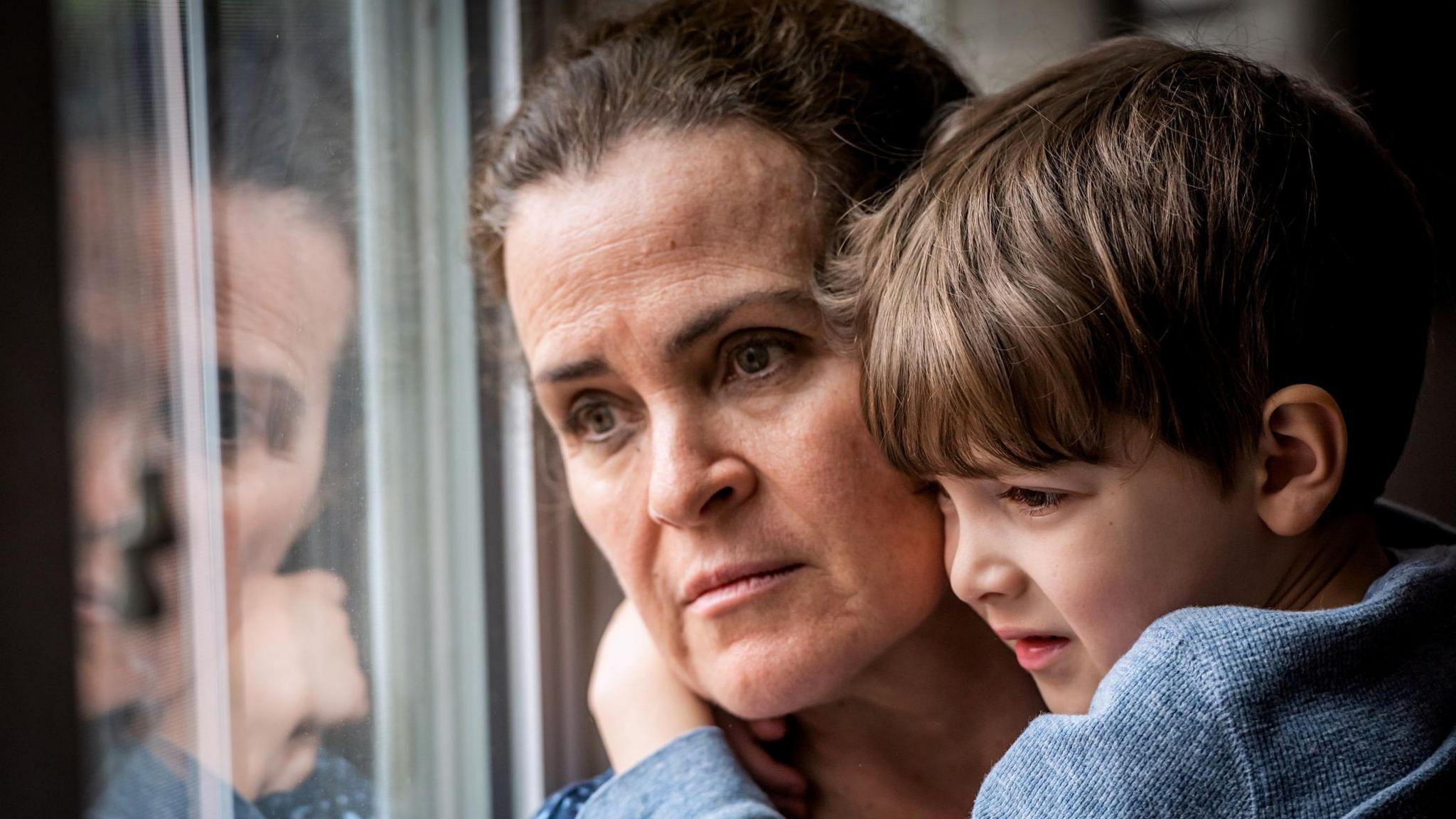'Harrowing' stories of homelessness and slum housing
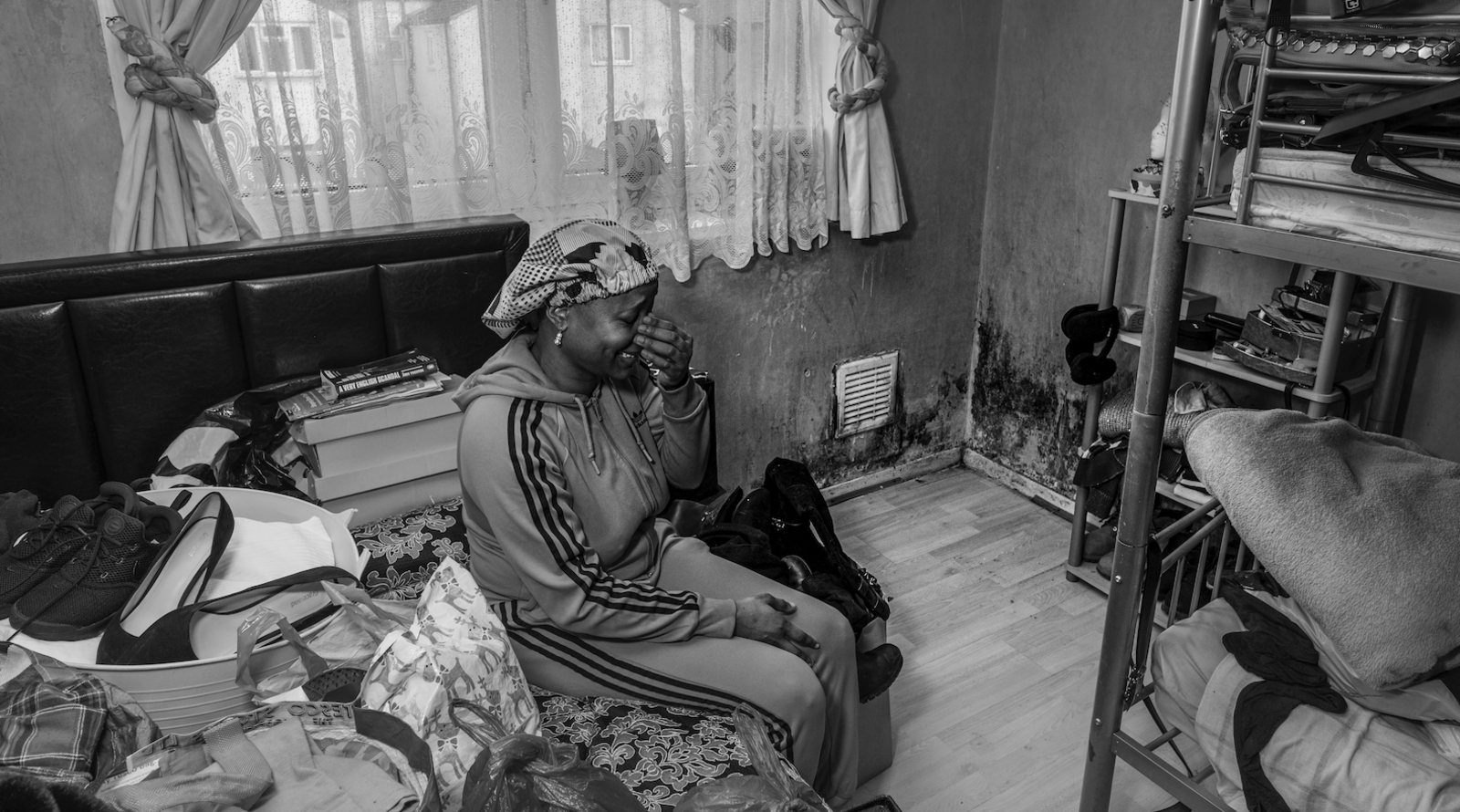
Uche told the photographer no matter what she tried the mould grew back in the corner of her home
- Published
Powerful images documenting the "shocking" state of Britain's substandard housing, as well as homelessness in all forms, have been captured and feature in an exhibition.
Photographer Marc Davenant works with marginalised communities to highlight social inequality.
His Outsiders exhibition, which has opened in Lichfield, Staffordshire, shows people sleeping rough as well as living in inadequate housing, often involving damp, mould and leaks.
His portraits were taken over a six-year period to try and get behind the hidden nature of the problem, he said.
The exhibition has also been shown at the House of Commons and will be toured around libraries and community spaces in other parts of the country including Newcastle, Glasgow and Hereford.
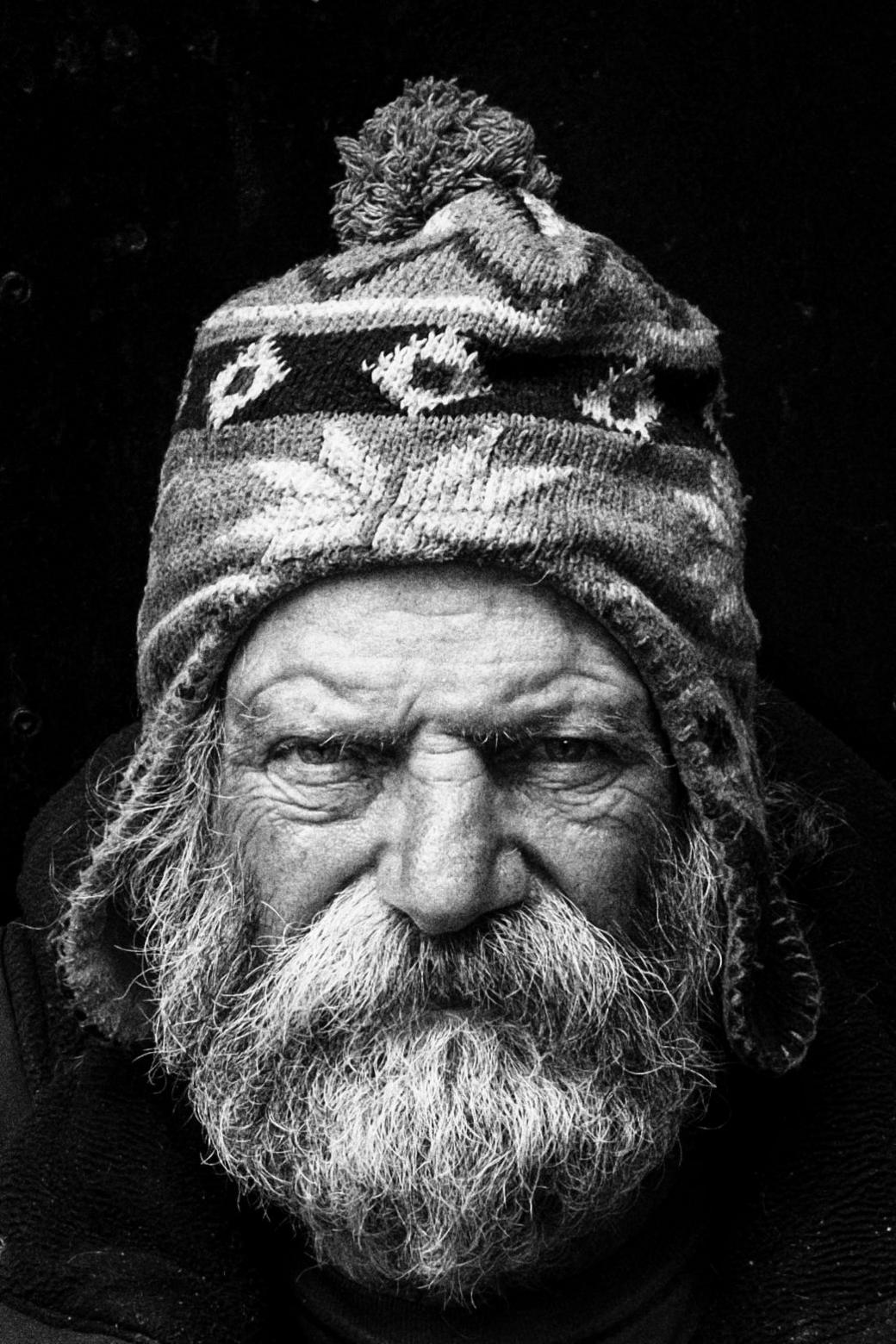
The photographer took six years to document homeless people including Dimitri
As well as showing people living on the streets of Britain, he said his project aimed to highlight the growing number living in temporary accommodation and sofa surfing.
"There are nearly 300,000 people in Britain today who are homeless, 120,000 of whom are children," he said.
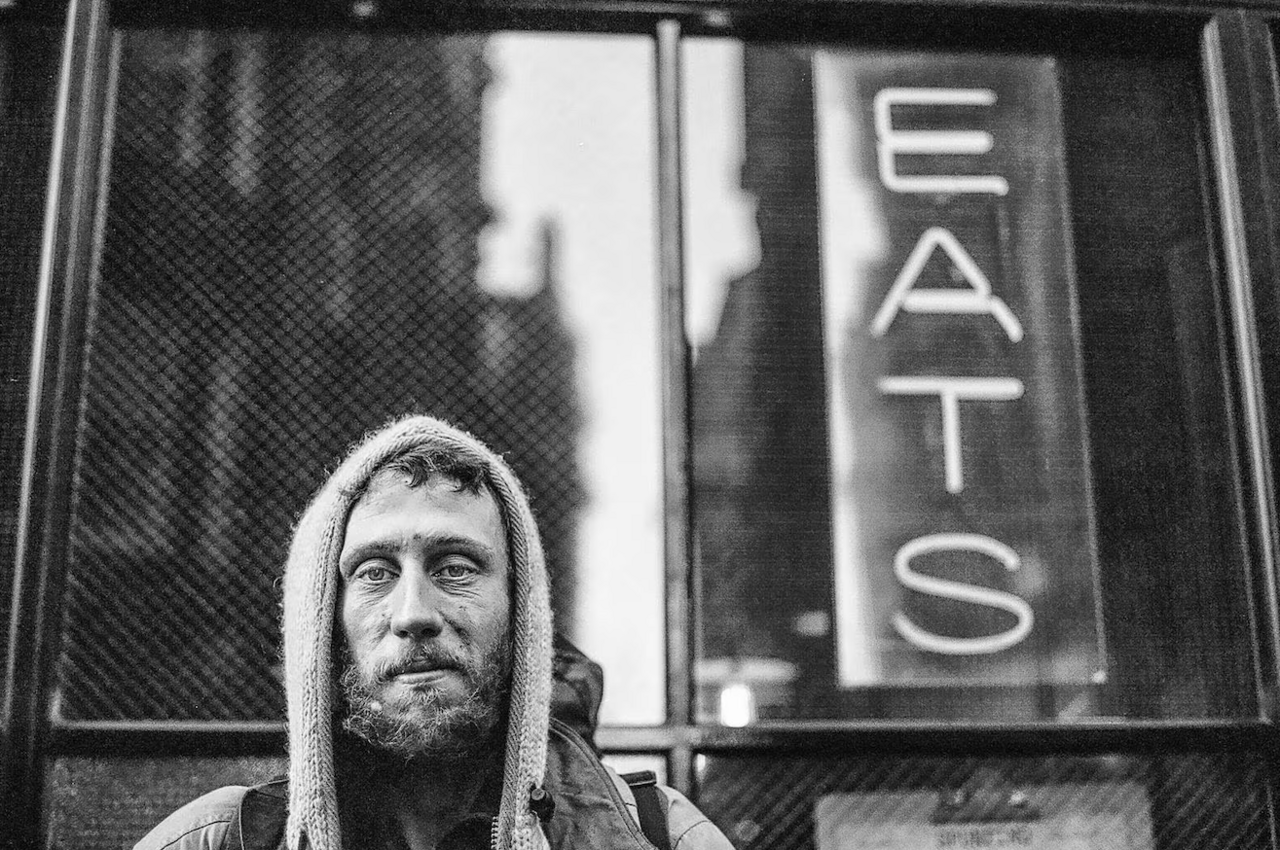
Stephen in Soho was the first photograph from the Outsiders project
The first portrait he took of a homeless man, always with consent, was Stephen, who he had met in London's Soho area.
"He told me his son had died aged four, and he couldn't cope," the documentary photographer said.
"He had taken to drink and ended up on the street," he explained.
"His story really struck me what a waste of potential it was. "
Stephen died shortly afterwards aged only 39 after falling ill while sleeping rough.
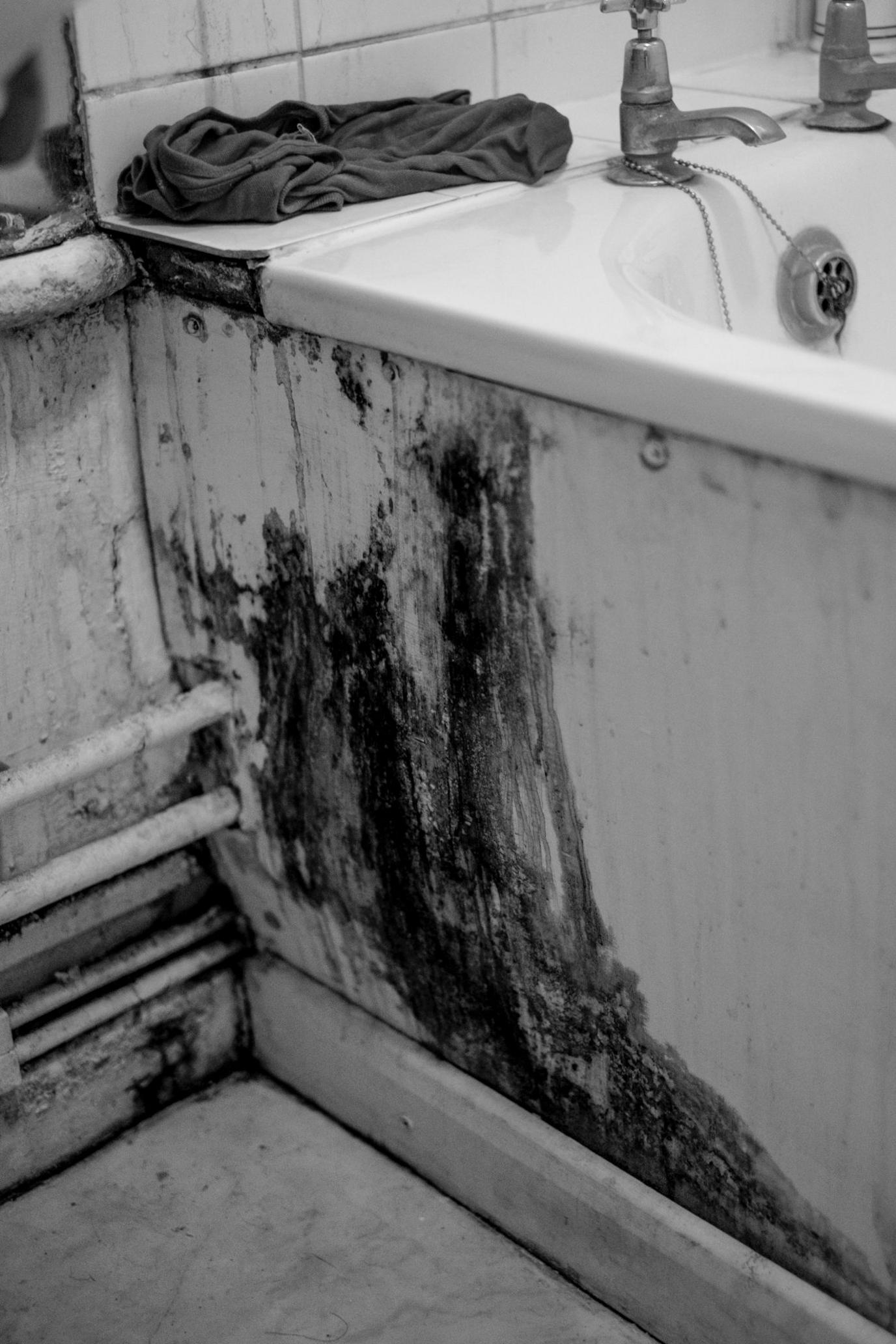
Joan's house was damp and unheated, said the photographer
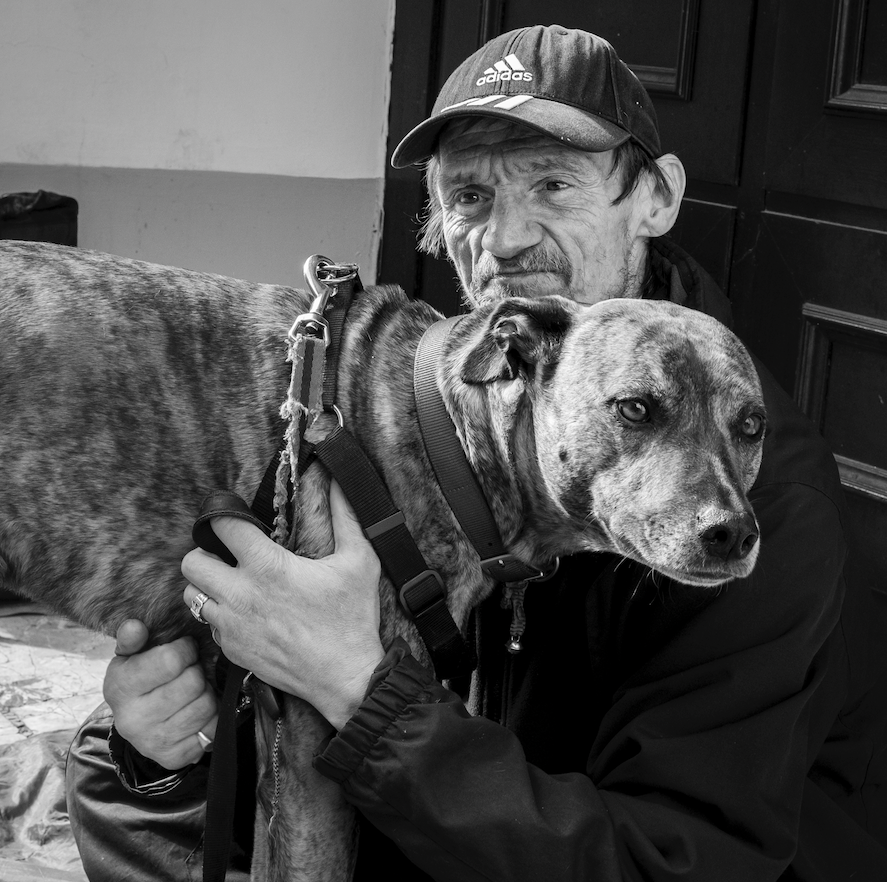
Greg is pictured with his dog Roxy in Glasgow
The project had grown to be a national initiative, working with charities including Shelter.
"I hoped to focus attention on the way people are ignored and treated by society who see them as less than human," he said.
Along with the images it was important to capture the stories of those featured he explained, that were often "harrowing".
"Otherwise people lose control over how they're portrayed, and part of the project was about challenging stereotypes," he said.
"I was determined to bring out the humanity of the people in my portraits."
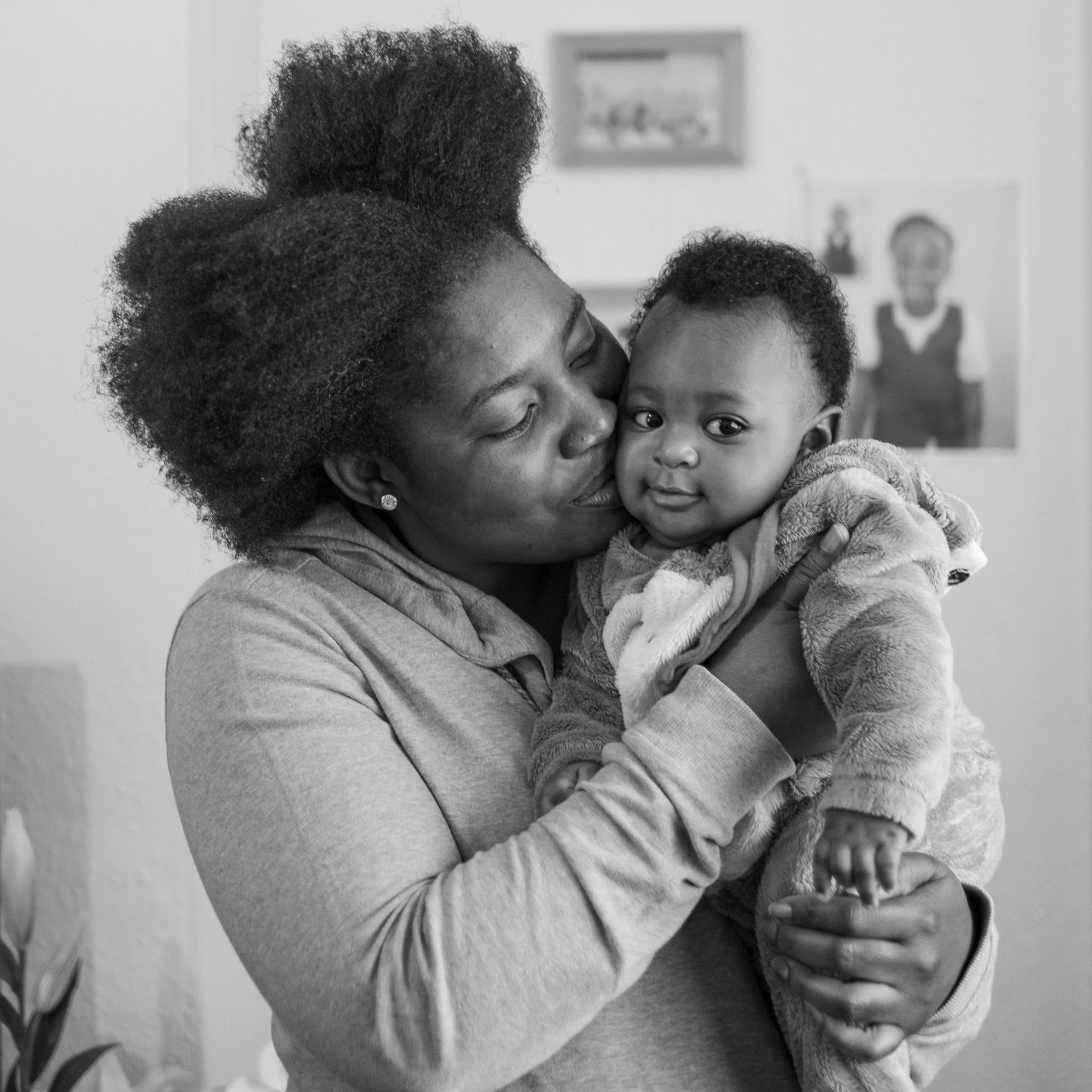
Loise lived on the streets for four years with her baby
The living conditions of some of those he photographed living in "slum housing" were "mind boggling," he added.
"You've got to think it's actually much worse than it looks in the photo, and you don't get a sense of the smell or despair.
"There's quite a few, you step into them, just look around, and you can't believe what you're seeing.
One council-owned property, where contributor Joan was living, had had "water pouring into it for three months," he said.
"It was dripping from the ceiling, running down through the airing cupboard like a water feature, and all the wood had rotted away," he said.
The windows were also broken with no heating, he added.
"I've never been in a property so cold, and she couldn't afford heating or food."
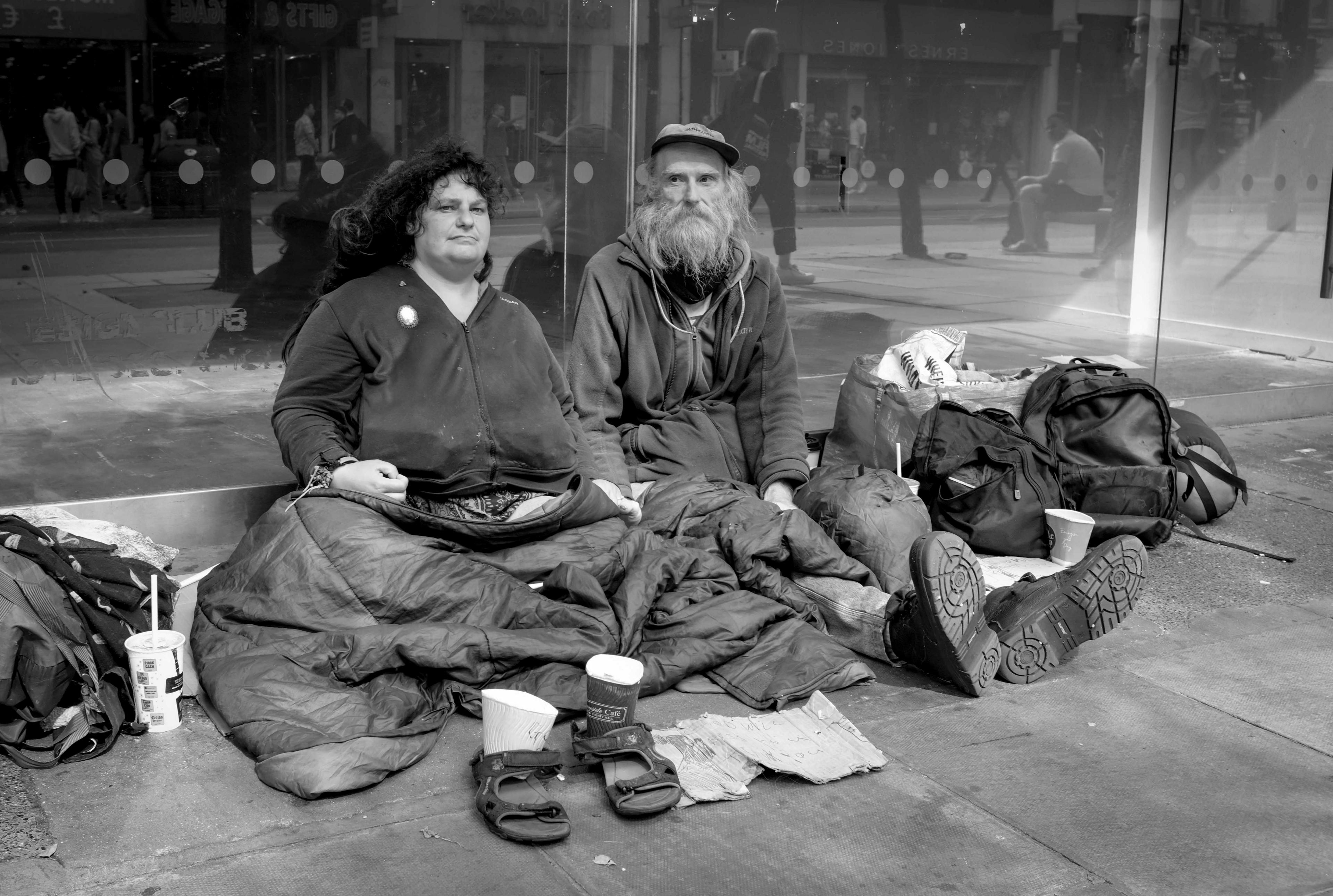
Ann and Dave are pictured living on the street in London
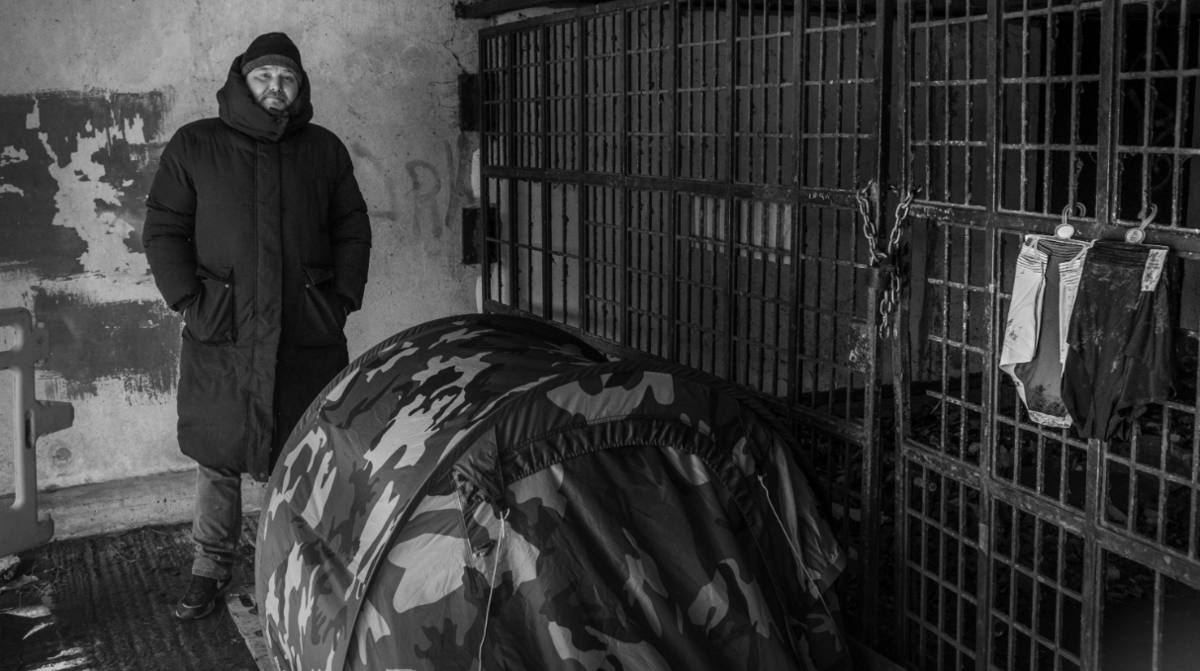
Billy who has learning difficulties is pictured with his tent under an abandoned building in York.
Another woman he had photographed, Loise, had ended up living on the streets with a baby for four years.
"Being street homeless is pretty difficult, being street homeless as a woman is incredibly difficult, and being street homeless with a baby is pretty inconceivable," he said.
"Every night she had to try and figure out where she could sleep safely with this child".
The project was a "searing indictment of successive governments’ failures when it comes to homelessness and substandard housing," added the photographer.
The government says it is "making progress" but "has more to do" in tackling homelessness and rough sleeping.
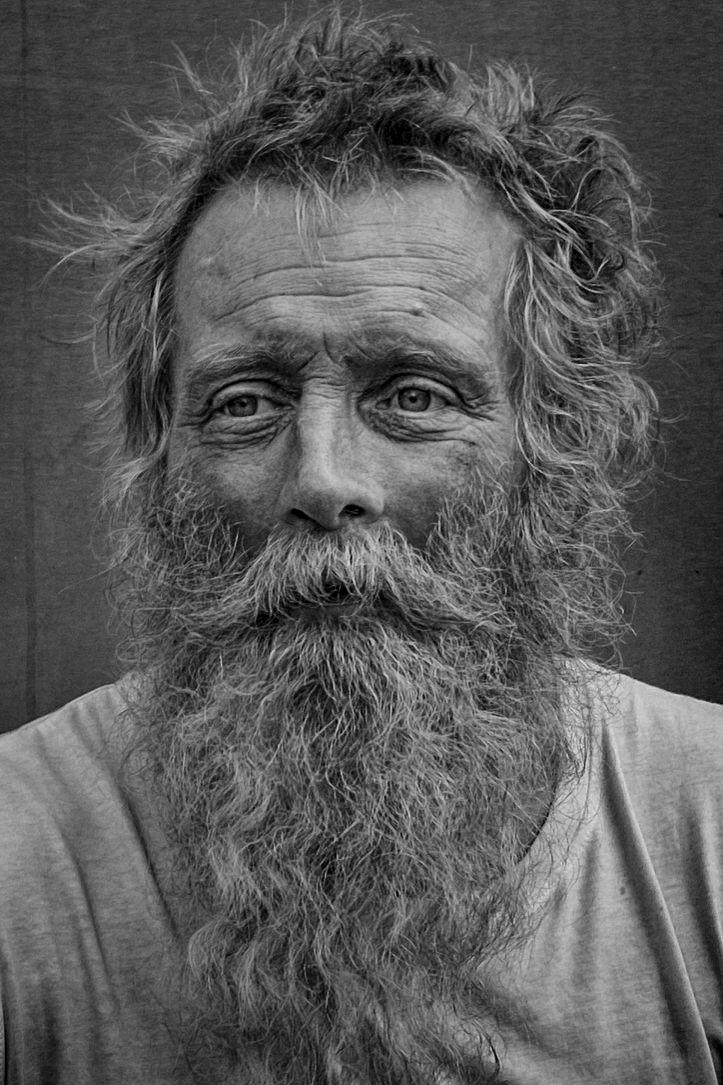
Charlie had been homeless for five years when he was pictured by Marc Davenant
The free exhibition runs at The Hub at St Mary’s in Lichfield until 22 June.
An associated book is published by Bluecoat Press.
Follow BBC West Midlands on Facebook, external, X, external, and Instagram, external. Send your story ideas to: newsonline.westmidlands@bbc.co.uk, external
- Published3 February 2024
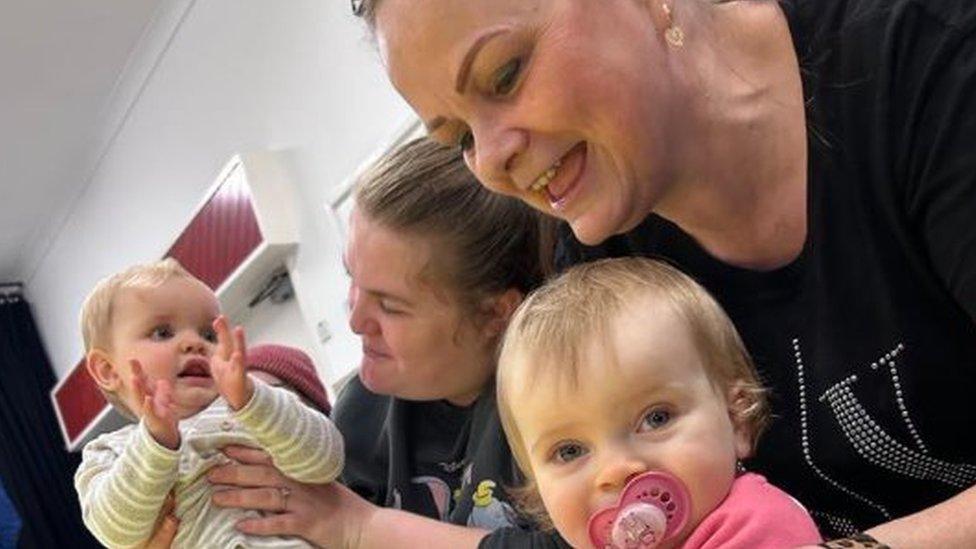
- Published15 November 2022
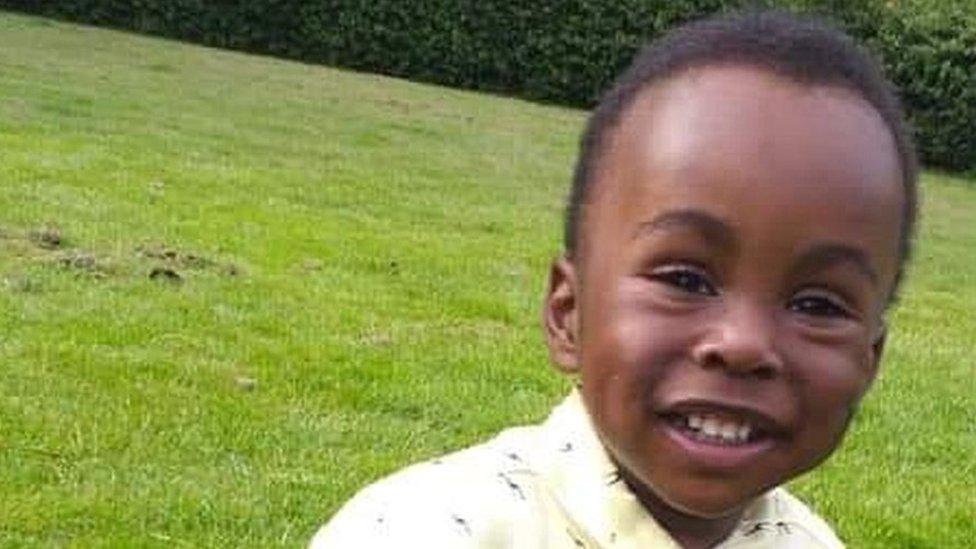
- Published13 February

- Published20 March 2024
